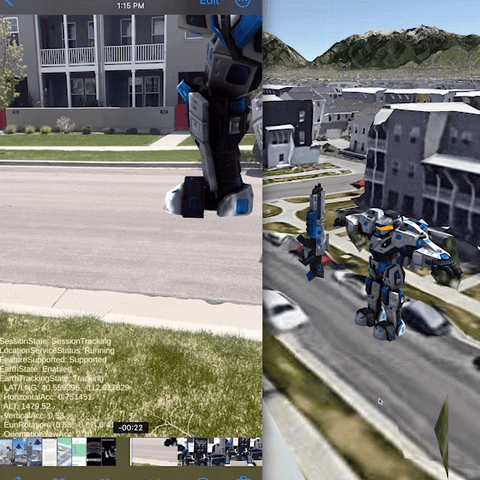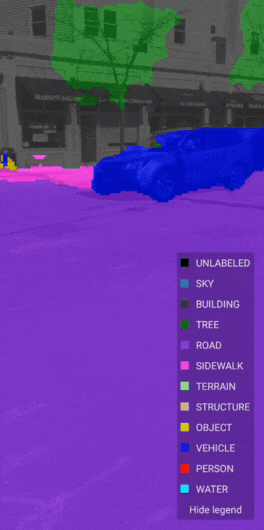What Is Google ARCore?
A very common question from developers today, who aren't familiar with AR, is what they can use for augmented reality development. Today, I would like to go over one SDK that can help developers seeking an Android and iOS SDK.
So let's look into answering the following questions: What is Google ARCore? What features does ARCore provide to developers? And lastly, which game engines can be used with ARCore today?
What Is ARCore?
ARCore is Google’s augmented reality SDK offering cross-platform APIs to build new immersive experiences on Android, iOS, Unity, and Web. (Credits: Google for creating this video).
Google's ARCore is a cutting-edge platform designed for building augmented reality (AR) experiences. It harnesses the power of mobile device sensors and APIs to understand and interact with the real-world environment. By overlaying digital information onto the physical world, ARCore has emerged as a game-changer in AR technology.
ARCore Features
ARCore offers developers an array of features to create compelling and immersive AR experiences. Here are 10 major features:
Geospatial Creator In Unity: Left image shows a 3D object within the physical world, right image shows Map Tiles API with 3D Photorealistic Tiles.
Motion Tracking: This feature allows ARCore to understand and track the phone's position relative to the world.
Environmental Understanding: Using the device's camera, ARCore identifies flat surfaces like floors, tables, or walls.
Light Estimation: ARCore observes ambient light in the environment and allows developers to light virtual objects under the same conditions, thus enhancing realism.
Depth Perception: With depth APIs, ARCore can create a depth map, improving object occlusion and physics-based interactions.
Augmented Images: ARCore can recognize 2D images and place virtual objects accurately on them.
Augmented Faces: This enables the creation of applications that can track faces, allowing for facial recognition and other related applications.
Cloud Anchors: ARCore allows shared AR experiences across multiple devices by using cloud anchors.
Instant Placement: This feature helps to place virtual objects immediately in the user's space without needing to first scan the environment.
Raw Depth Sensing: ARCore offers raw depth maps, which help create highly detailed representations of the surrounding environment.
ARCore Elements: It provides a set of common AR UI components that make it easier to build immersive AR experiences.
Most Recent Features Added ARCore
Geospatial API: ARCore's Geospatial API is a groundbreaking feature that enables developers to place AR objects at precise geographic coordinates. This technology allows the virtual AR objects to stay anchored to the real world, despite the user moving over large distances. It's incredibly useful for location-based AR applications, such as navigation aids or games that use real-world maps.
Geospatial Creator: This feature enables developers to design and create 3D AR experiences at scale on Google Maps. Developers can leverage Google's rich, accurate, and living model of the world to build dynamic, location-based AR experiences that users can access from any device.
Semantics: The Semantics API in ARCore allows developers to understand and categorize the semantics of detected objects and surfaces. For example, it can distinguish between the floor and a tabletop, or a wall and a window. This semantic understanding allows AR applications to interact more intuitively with the real world.
Streetscape API: Streetscape API provides an immersive street-level view, enhancing geospatial accuracy and providing a broader and more detailed understanding of the environment. This API, combined with ARCore's capabilities, can significantly improve applications like navigation tools or other location-specific AR experiences.
All these features help developers create more immersive, interactive, and contextually aware AR experiences. ARCore's continuous evolution promises a future where AR seamlessly blends the virtual and physical worlds.
ARCore's Integration with Game Engines
In today's scenario, many game engines fully support ARCore, enabling game developers to bring their imaginative AR experiences to life. Here are some top game engines compatible with ARCore:
Unity: One of the most popular game engines globally, Unity provides comprehensive support for ARCore, allowing developers to create AR experiences with a diverse range of functionality. Unity provides ARCore as a plugin, allowing developers to enable it by using a package called AR Foundation. AR Foundation provides cross-platform support for multiple augmented reality environments, including ARCore, ARKit, and OpenXR.
Unreal Engine: Unreal Engine has integrated ARCore, enabling developers to leverage its power and build high-quality AR games.
Godot: Godot has recently introduced support for ARCore, providing an open-source option for developers interested in AR game creation.
Top Android and iOS devices that support ARCore as of 2023
ARCore is supported in a large variety of devices, including Android and most recently iOS. Below, is a list of devices handpicked from a wider list which you can also review here.
Android Devices
Samsung Galaxy S21 Ultra: This high-end Samsung device comes equipped with a vibrant screen and powerful hardware, making it perfect for AR applications.
Google Pixel 5: Made by Google themselves, this device offers a clean Android experience and excellent ARCore compatibility.
OnePlus 9 Pro: Known for its high performance, the OnePlus 9 Pro provides a smooth experience for ARCore-based applications.
Samsung Galaxy Note 20 Ultra: This device features a large, high-resolution display, ideal for detailed AR experiences.
Sony Xperia 1 III: Sony's top-tier smartphone supports ARCore, leveraging its powerful camera system for great AR implementation.
iOS Devices
iPhone 13 Pro Max: As Apple's flagship, this device offers an excellent AR experience with the help of its sophisticated hardware and ARKit, but it also supports ARCore applications.
iPhone 12 Pro: This model also provides great support for AR applications due to its powerful A14 Bionic chip and high-quality display.
iPhone 13: This more affordable model in the 13 series still offers an excellent AR experience.
iPad Pro (2023): With its large, high-quality screen and top-notch performance, the iPad Pro provides a superb platform for ARCore applications.
iPhone SE (2023): The budget-friendly option from Apple's 2023 lineup still offers comprehensive ARCore support.
Please note that while ARCore was initially designed for Android, Google has provided compatibility for iOS devices as well. However, Apple devices typically use ARKit, Apple's proprietary AR platform. AR applications on iOS are usually built with ARKit, but ARCore-based apps can also run if the developers choose to support both platforms.
By integrating with these game engines, ARCore is pushing the boundaries of AR technology. As AR continues to evolve, we can look forward to even more innovative and immersive XR experiences in the future. Developers and enthusiasts alike are eagerly watching the space, excited to see the revolutionary transformations ARCore will bring.
Well, that wraps up the discussion about Google's ARCore, and I hope you enjoyed this post as much as I enjoyed putting it together.





